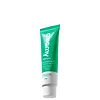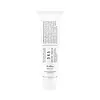What's inside
What's inside
 Key Ingredients
Key Ingredients

 Benefits
Benefits

 Concerns
Concerns

No concerns
 Ingredients Side-by-side
Ingredients Side-by-side

Water
Skin ConditioningCyclopentasiloxane
EmollientCetearyl Olivate
Propanediol
SolventSorbitan Olivate
EmulsifyingPersea Gratissima Oil
Skin ConditioningPentylene Glycol
Skin ConditioningCoco-Caprylate/Caprate
EmollientDipentaerythrityl Hexacaprylate/Hexacaprate
EmulsifyingPhytosterols
Skin ConditioningGlyceryl Caprylate
EmollientButylene Glycol
HumectantSodium Acrylates Copolymer
4-T-Butylcyclohexanol
MaskingTocopheryl Acetate
AntioxidantBisabolol
MaskingOlea Europaea Fruit Oil
MaskingGlycerin
HumectantSargassum Filipendula Extract
Skin ProtectingLecithin
EmollientHypnea Musciformis Extract
Skin ProtectingDimethicone/Vinyl Dimethicone Crosspolymer
Skin ConditioningSodium Gluconate
Skin ConditioningCaprylic/Capric Triglyceride
MaskingGlyceryl Undecylenate
EmollientSorbitan Oleate
EmulsifyingCentella Asiatica Extract
CleansingAscorbyl Palmitate
AntioxidantHydroxymethoxyphenyl Decanone
Skin ConditioningSodium Benzoate
MaskingPotassium Sorbate
PreservativeDextran
Palmitoyl Tripeptide-8
Skin ConditioningWater, Cyclopentasiloxane, Cetearyl Olivate, Propanediol, Sorbitan Olivate, Persea Gratissima Oil, Pentylene Glycol, Coco-Caprylate/Caprate, Dipentaerythrityl Hexacaprylate/Hexacaprate, Phytosterols, Glyceryl Caprylate, Butylene Glycol, Sodium Acrylates Copolymer, 4-T-Butylcyclohexanol, Tocopheryl Acetate, Bisabolol, Olea Europaea Fruit Oil, Glycerin, Sargassum Filipendula Extract, Lecithin, Hypnea Musciformis Extract, Dimethicone/Vinyl Dimethicone Crosspolymer, Sodium Gluconate, Caprylic/Capric Triglyceride, Glyceryl Undecylenate, Sorbitan Oleate, Centella Asiatica Extract, Ascorbyl Palmitate, Hydroxymethoxyphenyl Decanone, Sodium Benzoate, Potassium Sorbate, Dextran, Palmitoyl Tripeptide-8
Water
Skin ConditioningMelaleuca Alternifolia Leaf Water
AntimicrobialPropanediol
SolventGlycerin
Humectant1,2-Hexanediol
Skin ConditioningHydrogenated Polydecene
EmollientVinyldimethicone
C14-22 Alcohols
Emulsion StabilisingNiacinamide
SmoothingCaprylic/Capric Triglyceride
MaskingPanthenol
Skin ConditioningDicaprylyl Carbonate
EmollientButylene Glycol
HumectantAmmonium Acryloyldimethyltaurate/Vp Copolymer
Caprylyl Methicone
Skin ConditioningPolymethylsilsesquioxane
C12-20 Alkyl Glucoside
EmulsifyingHydroxyacetophenone
AntioxidantAcrylates/C10-30 Alkyl Acrylate Crosspolymer
Emulsion StabilisingPolyquaternium-51
Skin ConditioningEthylhexylglycerin
Skin ConditioningTromethamine
BufferingSodium Hyaluronate
HumectantSodium Stearoyl Glutamate
CleansingCoptis Japonica Root Extract
Skin ConditioningCentella Asiatica Leaf Water
Skin ConditioningBeta-Glucan
Skin ConditioningResveratrol
AntioxidantHydrolyzed Hyaluronic Acid
HumectantCamellia Sinensis Leaf Water
MaskingTocopherol
AntioxidantMadecassoside
AntioxidantSodium Dna
Skin ConditioningCentella Asiatica Extract
CleansingCeramide NP
Skin ConditioningTannic Acid
AstringentDisodium EDTA
Sodium Phytate
Water, Melaleuca Alternifolia Leaf Water, Propanediol, Glycerin, 1,2-Hexanediol, Hydrogenated Polydecene, Vinyldimethicone, C14-22 Alcohols, Niacinamide, Caprylic/Capric Triglyceride, Panthenol, Dicaprylyl Carbonate, Butylene Glycol, Ammonium Acryloyldimethyltaurate/Vp Copolymer, Caprylyl Methicone, Polymethylsilsesquioxane, C12-20 Alkyl Glucoside, Hydroxyacetophenone, Acrylates/C10-30 Alkyl Acrylate Crosspolymer, Polyquaternium-51, Ethylhexylglycerin, Tromethamine, Sodium Hyaluronate, Sodium Stearoyl Glutamate, Coptis Japonica Root Extract, Centella Asiatica Leaf Water, Beta-Glucan, Resveratrol, Hydrolyzed Hyaluronic Acid, Camellia Sinensis Leaf Water, Tocopherol, Madecassoside, Sodium Dna, Centella Asiatica Extract, Ceramide NP, Tannic Acid, Disodium EDTA, Sodium Phytate
 Reviews
Reviews

Ingredients Explained
These ingredients are found in both products.
Ingredients higher up in an ingredient list are typically present in a larger amount.
Butylene Glycol (or BG) is used within cosmetic products for a few different reasons:
Overall, Butylene Glycol is a safe and well-rounded ingredient that works well with other ingredients.
Though this ingredient works well with most skin types, some people with sensitive skin may experience a reaction such as allergic rashes, closed comedones, or itchiness.
Learn more about Butylene GlycolThis ingredient is an emollient, solvent, and texture enhancer. It is considered a skin-softener by helping the skin prevent moisture loss.
It helps thicken a product's formula and makes it easier to spread by dissolving clumping compounds.
Caprylic Triglyceride is made by combining glycerin with coconut oil, forming a clear liquid.
While there is an assumption Caprylic Triglyceride can clog pores due to it being derived from coconut oil, there is no research supporting this.
Learn more about Caprylic/Capric TriglycerideCentella Asiatica Extract (Centella) is derived from an herb native to Southeast Asia. It is famous for its anti-inflammatory and soothing properties.
Centella is rich in antioxidants and amino acids, such as Madecassic Acid and Asiaticoside.
Studies show the compounds in centella help with:
The combination of all these properties makes centella effective at soothing, hydrating, and protecting the skin.
Other great components of centella include Vitamin A, vitamin C, several B vitamins, and Asiatic Acid.
Fun fact: Centella has been used as a medicine and in food for many centuries. As a medicine, it is used to treat burns, scratches, and wounds.
Learn more about Centella Asiatica ExtractGlycerin is already naturally found in your skin. It helps moisturize and protect your skin.
A study from 2016 found glycerin to be more effective as a humectant than AHAs and hyaluronic acid.
As a humectant, it helps the skin stay hydrated by pulling moisture to your skin. The low molecular weight of glycerin allows it to pull moisture into the deeper layers of your skin.
Hydrated skin improves your skin barrier; Your skin barrier helps protect against irritants and bacteria.
Glycerin has also been found to have antimicrobial and antiviral properties. Due to these properties, glycerin is often used in wound and burn treatments.
In cosmetics, glycerin is usually derived from plants such as soybean or palm. However, it can also be sourced from animals, such as tallow or animal fat.
This ingredient is organic, colorless, odorless, and non-toxic.
Glycerin is the name for this ingredient in American English. British English uses Glycerol/Glycerine.
Learn more about GlycerinPropanediol is an all-star ingredient. It softens, hydrates, and smooths the skin.
It’s often used to:
Propanediol is not likely to cause sensitivity and considered safe to use. It is derived from corn or petroleum with a clear color and no scent.
Learn more about PropanediolWater. It's the most common cosmetic ingredient of all. You'll usually see it at the top of ingredient lists, meaning that it makes up the largest part of the product.
So why is it so popular? Water most often acts as a solvent - this means that it helps dissolve other ingredients into the formulation.
You'll also recognize water as that liquid we all need to stay alive. If you see this, drink a glass of water. Stay hydrated!
Learn more about Water